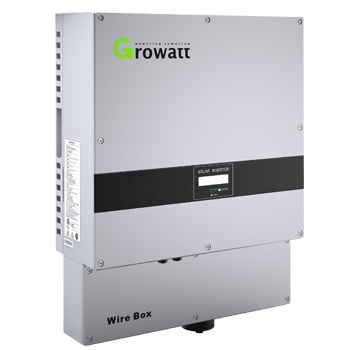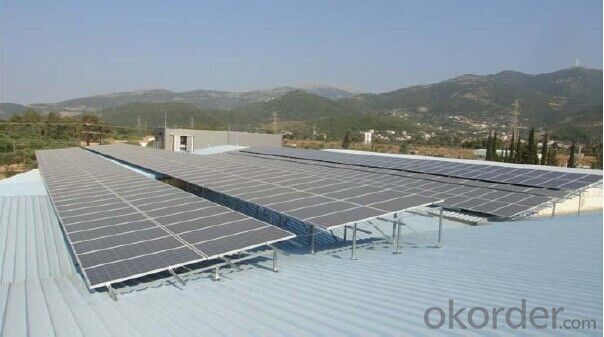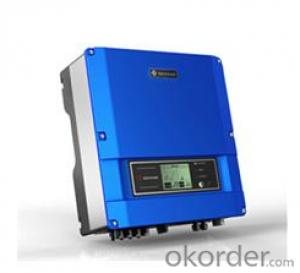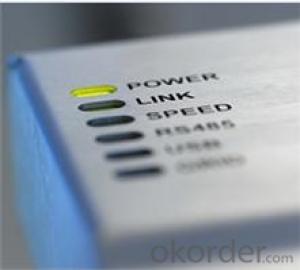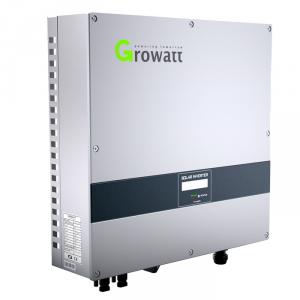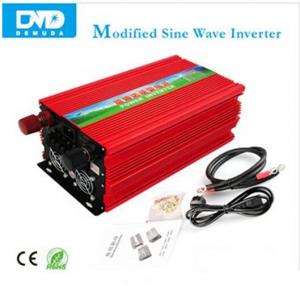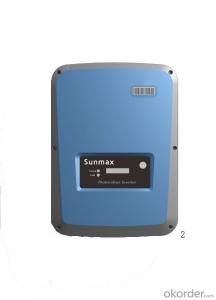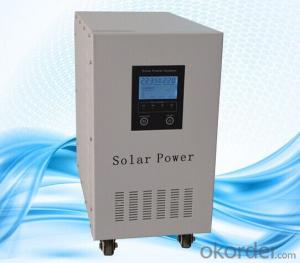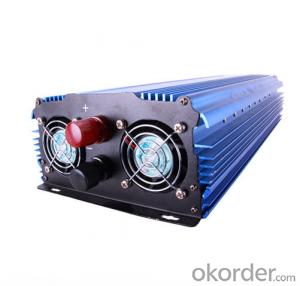High Frequency Solar Inverter 2000HF-US-3000HF-US
- Loading Port:
- Shekou
- Payment Terms:
- TT OR LC
- Min Order Qty:
- 10 watt
- Supply Capability:
- 10000 watt/month
OKorder Service Pledge
Quality Product, Order Online Tracking, Timely Delivery
OKorder Financial Service
Credit Rating, Credit Services, Credit Purchasing
You Might Also Like
High Frequency Solar Inverter 2000HF-US-3000HF-US
Specifications
>Maximum efficiency of 96% >DC switch optional
>High frequency transformer topology
>MTL-String
>Bluetooth technology
2000HF-US 2500HF-US 3000HF-US
Leading - edge Technology
>Maximum efficiency of 96% and wide input voltage range
>DC switch optional
>High frequency transformer topology
>MTL-String
>Bluetooth technology
>Sound control
>Fanless cooling concept
>Easy installation
>High reliability
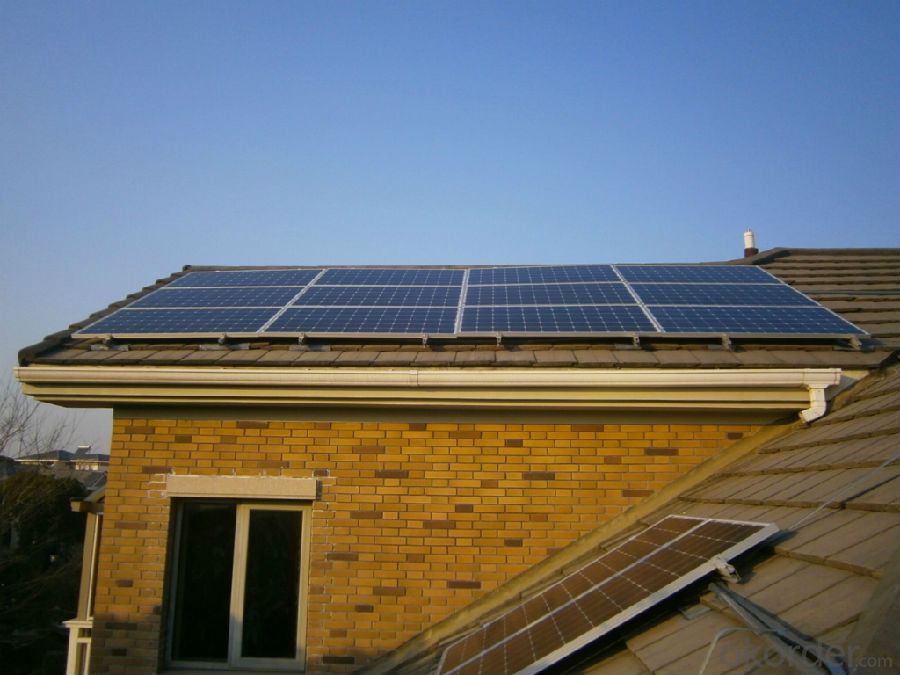

| Input data (DC side) | |||
| Model | 2000 HF-US | 2500 HF-US | 3000HF-US |
| Specifications | |||
| Input data | |||
| Max. DC power | 2200W | 2700W | 3200W |
| Max. DC voltage | 600V | 600V | 600V |
| Start voltage | 150V | 150V | 150V |
| DC nominal voltage | 370V | 370V | 370V |
| PV voltage range | 100V-600V | 100V-600V | 100V-600V |
| MPP voltage range | 195V~480V | 195V~480V | 250V-480V |
| Number of MPP trackers/strings per MPP tracker | 1/2 | 1/2 | 1/2 |
| Max. input current /per string | 12A/12A | 15A/15A | 15A/15A |
| Output (AC) | |||
| Nominal AC output power | 2000W@208Vac | ||
| 2000W@240 Vac | 2500W@208Vac | ||
| 2500W@240 Vac | 2800W@208Vac | ||
| 3000W@240Vac | |||
| Max. AC power | 2000W | 2500W | 2800W@208Vac |
| 3000W@240Vac | |||
| Nominal output current | 9.6A/8.3A | 12A/10.4A | 13.4A/12.5A |
| Max. output current | 10.7A/9.5A | 13.4A/11.8A | 15A/14.2A |
| AC nominal voltage; range | 208V/240V; 183V~228V@208Vac | ||
| 211V~264V@240Vac | 208V/240V; 183V~228V@208Vac | ||
| 211V~264V@240Vac | 208V/240V; 183V~228V@208Vac | ||
| 211V~264V@240Vac | |||
| AC grid frequency; range | 60Hz; 59.3--60.5Hz | 60Hz; 59.3--60.5Hz | 60Hz; 59.3--60.5Hz |
| Phase shift (cosφ) | >0.99 | >0.99 | >0.99 |
| THDI | <3%< td=""> | <3%< td=""> | <3%< td=""> |
| AC connection | Single phase | Single phase | Single phase |
| Efficiency | |||
| Max. efficiency | 96% | 96% | 96% |
| CEC.effciency | 95% | 95% | 95% |
| MPPT efficieny | 99.50% | 99.50% | 99.50% |
| Protection devices | |||
| DC reverse polarity protection | yes | yes | yes |
| AC short - circuit protection | yes | yes | yes |
| Ground fault monitoring | yes | yes | yes |
| Grid monitoring | yes | yes | yes |
| Integrated all - pole sensitive | |||
| leakage current monitoring unit | yes | yes | yes |
| General Data | |||
| Dimensions (W / H / D) in mm | 575/455/160 | 575/455/160 | 575/455/160 |
| Weight | 14.6KG | 15.1 KG | 15.9 KG |
| Operating temperature | |||
| range | –25°C ... +60°C | –25°C...+60 °C | –25°C ... +60°C |
| Continuous full output power | |||
| temperature range | –25°C…+45°C | –25°C…+45°C | –25°C…+45°C |
| Noise emission (typical) | ≤ 25 dB(A) | ≤ 25 dB(A) | ≤ 25 dB(A) |
| Altitude | Up to 2000m without power derating | ||
| Consumption: operating | |||
| (standby) / night | <5W / < 0.5 W | <5W / < 0.5 W | <5 W / < 0.5 W |
| Topology | HF transformer | HF transformer | HF transformer |
| Cooling concept | No fan | No fan | No fan |
| ENCLOSURE | Type 3R | Type 3R | Type 3R |
| Installation: Indoors /Outdoors | yes /yes | yes /yes | yes /yes |
| Features | |||
| DC connection: Terminals | yes | yes | yes |
| AC connection: Terminals | yes | yes | yes |
| LCD display | yes | yes | yes |
| Interfaces: Bluetooth / | |||
| RS485/RS232 | opt/yes/yes | opt/yes/yes | opt/yes/yes |
| Warranty: 10 years / 15 years | yes /opt | yes /opt | yes /opt |
| Certificates and approvals | UI1741,IEEE1547,CSA C22.2 No.107.1, | ||
| FCC Part15(Class B) | |||
- Q: Can a solar inverter be used with a solar-powered EV charging network?
- Yes, a solar inverter can be used with a solar-powered EV charging network. A solar inverter converts the direct current (DC) generated by solar panels into alternating current (AC) that can be used to power electric vehicles (EVs). By integrating a solar inverter into a solar-powered EV charging network, the excess solar energy can be efficiently utilized to charge EVs, reducing dependence on the grid and promoting sustainable transportation.
- Q: Can a solar inverter be used in commercial or industrial applications?
- Yes, a solar inverter can be used in commercial or industrial applications. In fact, solar inverters are commonly used in these settings to convert the direct current (DC) generated by solar panels into alternating current (AC) that can be used to power various electrical devices and equipment in commercial and industrial buildings.
- Q: Can a solar inverter be used in mobile or portable solar systems?
- Yes, a solar inverter can be used in mobile or portable solar systems. Portable solar systems often include a solar panel, battery, and inverter to convert the DC (direct current) power generated by the solar panel into AC (alternating current) power that can be used to power various devices and appliances. The inverter helps ensure compatibility and usability of the generated solar power in these mobile or portable setups.
- Q: Can a solar inverter be used with a solar water pumping system?
- Yes, a solar inverter can be used with a solar water pumping system. The solar inverter converts the DC power generated by the solar panels into AC power, which is required to operate the water pump. This allows for the efficient and reliable operation of the solar water pumping system using solar energy.
- Q: Can a solar inverter be connected to a backup battery system?
- Yes, a solar inverter can be connected to a backup battery system. This allows the solar energy generated during the day to be stored in the backup batteries and used during times when there is no sunlight or during power outages.
- Q: Can a solar inverter be used in mobile applications?
- Yes, a solar inverter can be used in mobile applications. There are specifically designed solar inverters available that are compact and portable, making them suitable for use in mobile applications such as RVs, boats, and other vehicles. These inverters can convert the DC power generated by solar panels into AC power to run various devices and appliances on the go.
- Q: Can a solar inverter be used with different types of communication protocols?
- Yes, a solar inverter can be used with different types of communication protocols. Many modern solar inverters are designed to be compatible with various communication protocols such as Wi-Fi, Ethernet, RS485, and Modbus, among others. This flexibility allows the solar inverter to integrate with different monitoring systems, smart devices, or home automation systems, ensuring seamless communication and control.
- Q: What are the different types of solar inverters available?
- There are several types of solar inverters available, including string inverters, microinverters, and power optimizers. String inverters are the most common and are installed at a central location, converting the DC power generated by multiple solar panels into AC power. Microinverters, on the other hand, are installed on each individual solar panel, converting the DC power to AC power at the panel level. Power optimizers are similar to microinverters but work in conjunction with a string inverter, optimizing the power output of each panel before it reaches the inverter. Each type of inverter has its own advantages and suitability based on the specific solar installation requirements.
- Q: Can a solar inverter be used for both grid-tied and off-grid systems?
- Yes, a solar inverter can be used for both grid-tied and off-grid systems. However, it is important to note that there are different types of solar inverters designed specifically for each system. Grid-tied inverters are designed to convert DC power generated by solar panels into AC power and feed it into the grid, while off-grid inverters are designed to convert DC power into AC power for use in standalone systems not connected to the grid.
- Q: Can a solar inverter be used with a solar-powered electric vehicle charging station?
- Yes, a solar inverter can be used with a solar-powered electric vehicle charging station. The solar inverter helps convert the direct current (DC) power produced by the solar panels into alternating current (AC) power that can be used to charge electric vehicles. This allows for efficient and sustainable charging of electric vehicles using solar energy.
Send your message to us
High Frequency Solar Inverter 2000HF-US-3000HF-US
- Loading Port:
- Shekou
- Payment Terms:
- TT OR LC
- Min Order Qty:
- 10 watt
- Supply Capability:
- 10000 watt/month
OKorder Service Pledge
Quality Product, Order Online Tracking, Timely Delivery
OKorder Financial Service
Credit Rating, Credit Services, Credit Purchasing
Similar products
Hot products
Hot Searches
Related keywords



